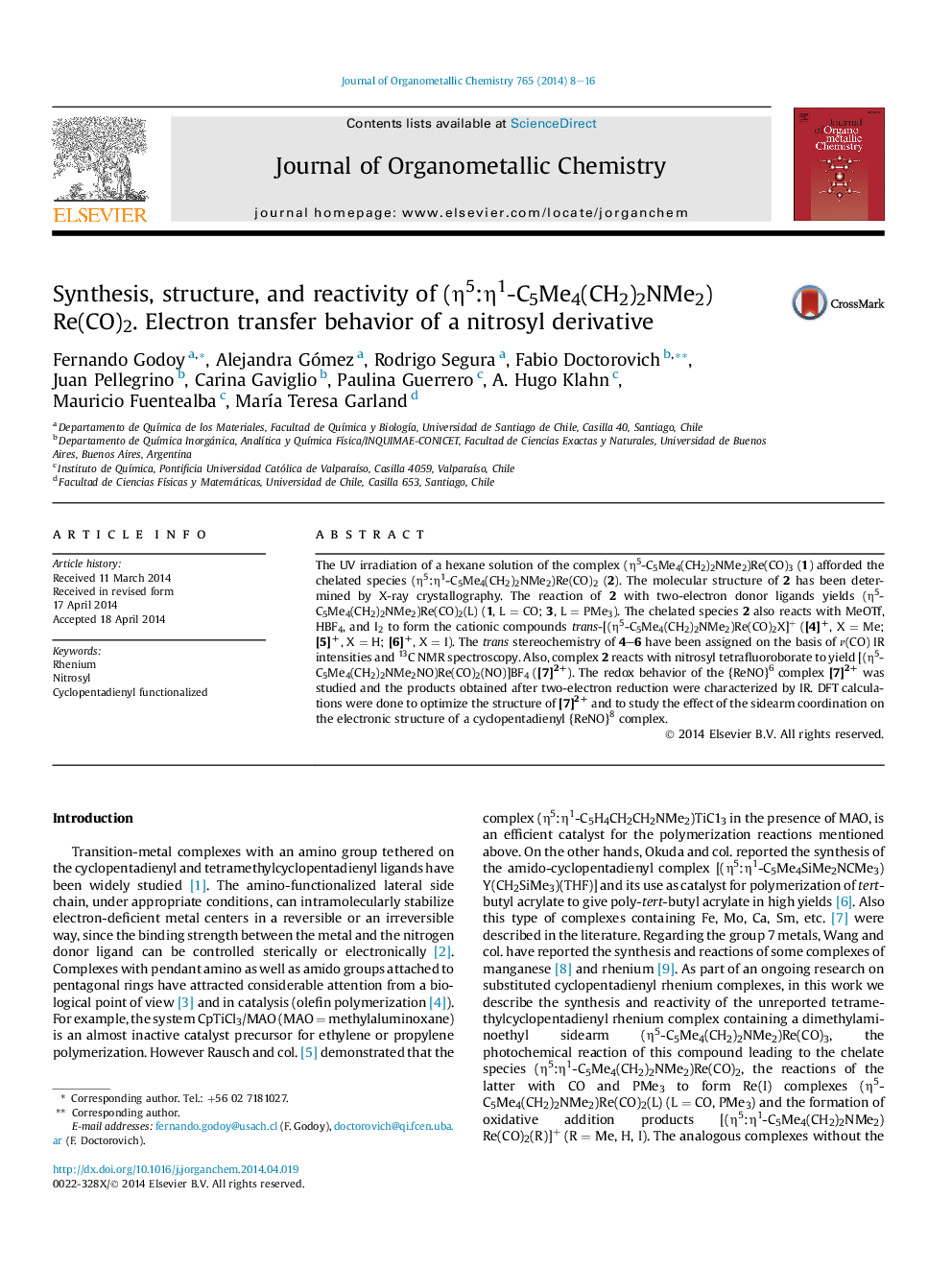| Article ID | Journal | Published Year | Pages | File Type |
|---|---|---|---|---|
| 1322321 | Journal of Organometallic Chemistry | 2014 | 9 Pages |
•The dimethylamino group is easily displaced by two electron donor ligands.•Re(III) complexes exhibited a trans stereochemistry, the NMe2 remained coordinated.•The assignment of the NO stretching band was confirmed by 15N enriched compound.•The new {ReNO}6 was prepared and characterized and the redox behavior was studied.
The UV irradiation of a hexane solution of the complex (η5-C5Me4(CH2)2NMe2)Re(CO)3 (1) afforded the chelated species (η5:η1-C5Me4(CH2)2NMe2)Re(CO)2 (2). The molecular structure of 2 has been determined by X-ray crystallography. The reaction of 2 with two-electron donor ligands yields (η5-C5Me4(CH2)2NMe2)Re(CO)2(L) (1, L = CO; 3, L = PMe3). The chelated species 2 also reacts with MeOTf, HBF4, and I2 to form the cationic compounds trans-[(η5-C5Me4(CH2)2NMe2)Re(CO)2X]+ ([4]+, X = Me; [5]+, X = H; [6]+, X = I). The trans stereochemistry of 4–6 have been assigned on the basis of ν(CO) IR intensities and 13C NMR spectroscopy. Also, complex 2 reacts with nitrosyl tetrafluoroborate to yield [(η5-C5Me4(CH2)2NMe2NO)Re(CO)2(NO)]BF4 ([7]2+). The redox behavior of the {ReNO}6 complex [7]2+ was studied and the products obtained after two-electron reduction were characterized by IR. DFT calculations were done to optimize the structure of [7]2+ and to study the effect of the sidearm coordination on the electronic structure of a cyclopentadienyl {ReNO}8 complex.
Graphical abstractThe NMe2 group in the complex (η5:-2 (2) is easily displaced by two electron donor. However, the cationic species Re(III) with a trans stereochemistry, in which the NMe2 sidearm remained coordinated. The redox behaviour of the nitrosyl derivative was studied and the DFT calculations were done to optimize the structure.Figure optionsDownload full-size imageDownload as PowerPoint slide
